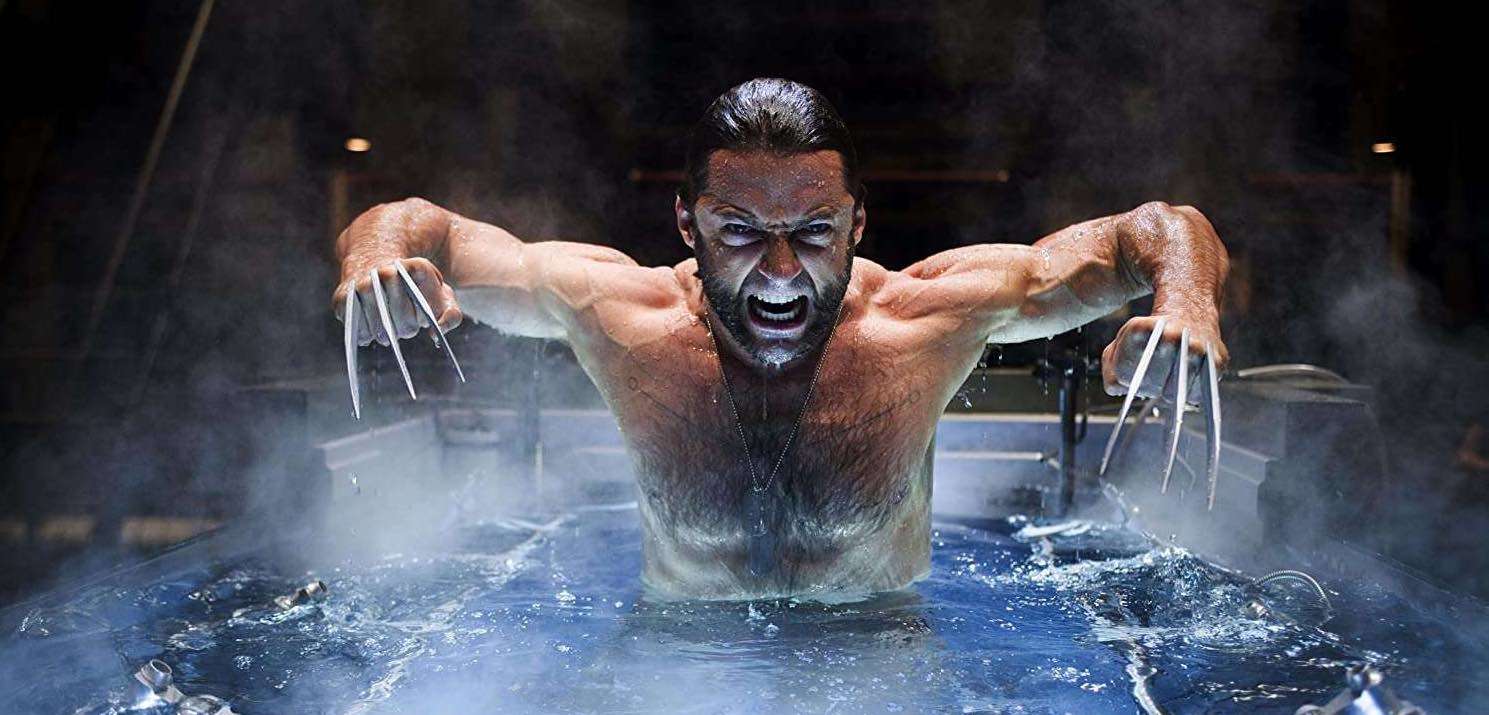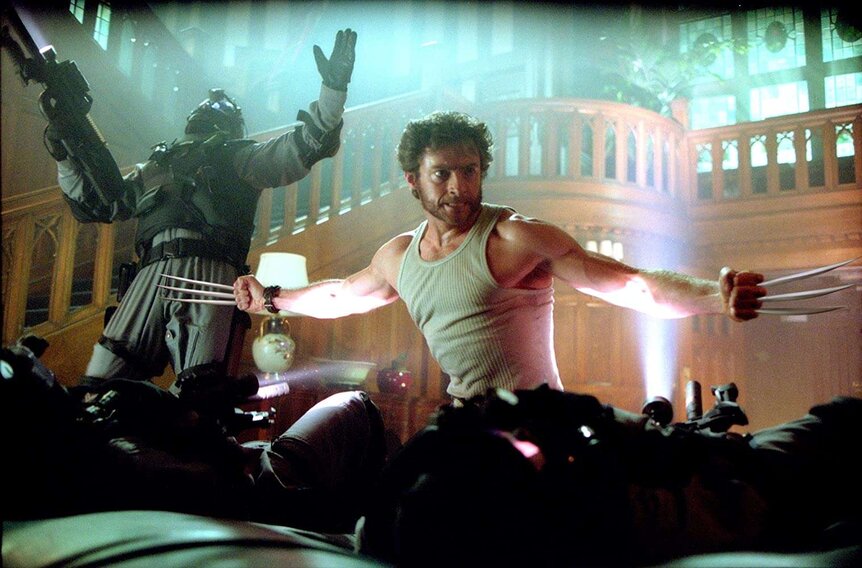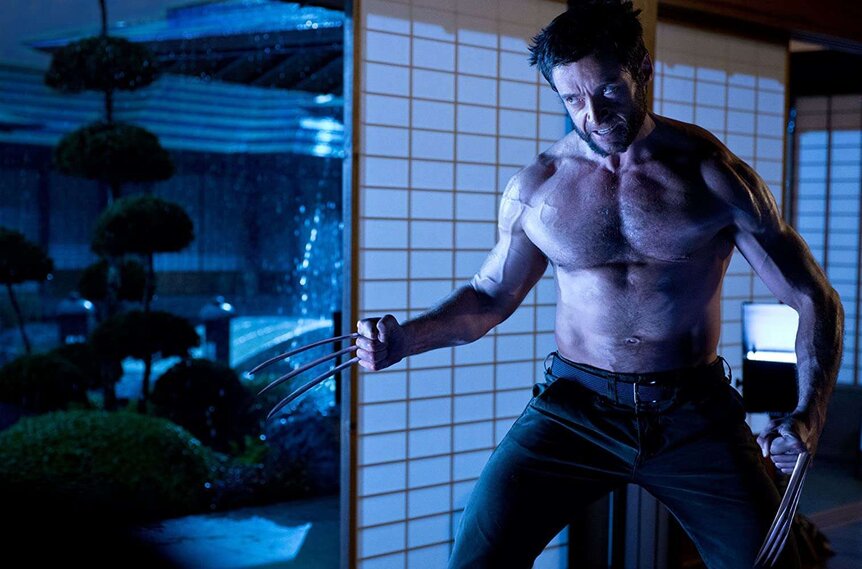Create a free profile to get unlimited access to exclusive videos, sweepstakes, and more!
Hugh Jackman's furiously ripped Wolverine defined the modern superhero body

The next time you find yourself thirsting over (or just being generally flabbergasted by) a shredded Marvel Cinematic Universe or DCEU hero, take a moment to thank Hugh Jackman.
Whether we’re talking about the Chrises Hemsworth, Pratt, and Evans, Ben Affleck’s Thick Bruce Wayne, or the more recent (and slightly more extreme in terms of origin point) Kumail Nanjiani, the modern superhero body is what it is (for better or worse) because of Jackman’s work as Wolverine over the course of nearly two decades. Throughout his 17 years as the iconic hero, Jackman (and Logan with him) went through a noted transformation, first pioneering the sculpted superhero body we’ve come to expect in our onscreen heroes today and then pushing it to borderline-inhuman limits as the actor aged and the character became more popular. By the time he bowed out of the role, the Logan we bid farewell to bore little to no physical resemblance to the one we met in 2000's X-Men — and Jackman would be the first to tell you that it was by design.
Despite Wolverine being one of the premiere Short Kings of the comic book world, 20th Century Fox went tall when they cast Jackman in the role (though in one of the all-time great casting What Ifs, Glenn Danzig, the premiere broad Short King himself, was considered). When we first meet Jackman’s Wolverine, he’s shirtless and fighting in a dive bar cage match, showing off an impressively fit form — at least, by normie standards.
Jackman’s body in X-Men is that of a person who hits the gym a respectable five-ish times per week, minus a little bit of water weight, as is tradition in onscreen shirtless scenes (dehydrating the body before shirtless scenes so as to achieve a maximum cut look is an extreme but unfortunately commonplace practice in Hollywood). He’s far more cut than buff, more resembling the premiere film-fitness icon of the '90s, Brad Pitt’s Tyler Durden from Fight Club.
It’d be ludicrous to imply Jackman looks bad, but even by superhero standards in 2000, there’s certainly something missing.
By his own admission, Jackman wasn’t totally happy with how he looked in that film, though he’s hardly to blame. He was rather famously cast four entire weeks into filming, with actor Dougray Scott being removed from the role when it became clear things weren’t working out. Fitness prep for later-stage Wolverine appearances would often run as long as five or six months leading up to filming, so Jackman more or less had to bring his real-life body to set every day for X-Men.
Even as soon as X2, there’s a perceptible change, with the actor putting on noticeable size in his upper body for the performance. It’s most evident in his arms, which practically look twice as big as they were in the prior film. His chest also fills out notably. X2’s Wolverine feels like the blueprint for superhero bodies to come, striking a deft balance of bulk with shredded tone to make the muscles pop as much as possible.
Jackman would go on to refine this look in X-Men: The Last Stand and bring it to something resembling an apex in X-Men Origins: Wolverine, specifically in the Weapon X escape sequence. His form in those films feels like what films like Thor, Man of Steel, and Captain America: The First Avenger are taking note from in their respective Heroic Hunk Goes Shirtless scenes. The lead actors of these films are chasing after an aesthetic ideal that is, no other way to put it, superhuman. They’re looking to replicate the wholly over-the-top shape and size of the comic book characters they’re playing in a way that Christopher Reeve, Michael Keaton, and Tobey Maguire never did. Jackman is ostensibly the first actor to achieve the purest distillation of this goal, putting on a ton of muscle mass and then getting as lean as possible without losing it.
However, for Jackman, it still wasn’t enough. He was, by his account, always aspiring to something a bit less human-looking: “I want Logan to look animalistic, savage, carnal, veins popping out, and coiled like a spring ... That was always the goal.” It’s perhaps a testament to Hollywood’s warped relationship with the human form that Jackman felt he hadn’t accomplished that look in any of the prior films. Most would kill to be in as good a shape as he is in those early Wolverine appearances, though you don’t have to — it’s worth noting that a combination of working out five to six days a week, not skipping cardio or leg day, plenty of sleep, and a well-rounded diet high in protein is more than enough to achieve your fitness goals, whatever they may be.
That said, most of us aren’t playing superheroes professionally. And in a field as competitive as Hollywood’s superhero scene, you’ve got to keep things moving forward. Having perfected the Hollywood superhero body, Jackman finally had the bandwidth to get wild with it, taking it to the extreme (X-treme? Get it?) for 2013’s The Wolverine.
No, the film isn’t technically the first Wolverine solo film, but given the icy reception of Origins, the soft reboot of the X-Men franchise in First Class, and the film seeking to adapt perhaps the single most famous Logan story of all time in Frank Miller and Christ Claremont’s Wolverine, it was a chance for a fresh start. Jackman capitalized on it in a big way. His body in this film is a full realization of his original fitness goals for Logan, a hulking, borderline-inhuman mass of muscles piled on muscles, his skin practically bursting at the seams to keep it all contained. He’s broader, thicker, and craggier, the musculature crossing over from a smooth, refined look tapering at the waist to a more primal build. The broadness extends from his shoulders to his back and lower torso. He looks like a tank. Tanks ain’t pretty.
Jackman genuinely looks to be twice the size in The Wolverine as he was in his first appearance as Logan in X-Men, and kept that mass and definition going throughout Days of Future Past, eventually carrying it into his final turn as the character in Logan.
It feels appropriate that the film ends on a broken, world-weary Wolverine. In the film, Logan — and Jackman by proxy — carries his body with weariness, the sheer mass of it seeming to be something his frame can no longer support. Onscreen it works for story purposes. Offscreen it’s a reminder that the constant aggressive dieting, four-hour workouts, and rigorous attention to muscular detail is an exhausting burden, especially for a guy we know for sure used to carry around a significantly smaller body.
Over the course of his 17-year performance as Wolverine, Jackman helped define the modern superhero body and then superseded it. Hopefully he’s been enjoying his fair share of cheat meals since then. He’s earned them.




























